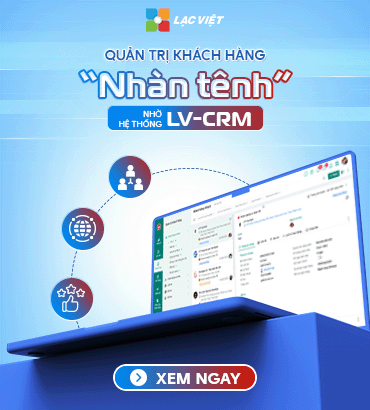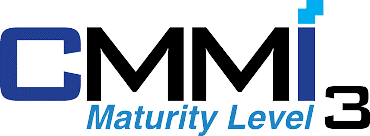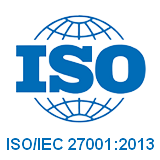The digital business is no longer just face the challenge of speed and network performance, but also to solve security problems, network management complexity, high investment costs. Software Defined Network (SDN) has emerged as an advanced solution, brings the ability to control and optimize network infrastructure intelligently, more efficiently than ever before.
So, SDN is what architecture SDN, including the floor? How to business can deploy and leverage the maximum benefits of this technology? In this article Lac Viet Computing will answer all these questions revolve around the system SDN.
1. Overview of Software Defined Network (SDN)
1.1 Software Defined Network is what?
Software Defined Network (SDN) is a network architecture advanced use software to manage and control the network instead of relying completely on the hardware as in the traditional model.

SDN represents the shift from the use of the device independent network to a centralized model in which the software take on the main role in the management and network optimization. This brings the ability to better control, more flexibility in deployment, advanced system performance network.
1.2 differences between traditional network and network SDN
In the context of technology is growing, the difference between traditional network and Software Defined Network (SDN) increasingly clear. Especially for business, the selection of network solutions suitable not only affect the efficiency of operation which determine the ability to adapt to number conversion.
Specifically, traditional network is a network model based on the hardware in which the network device (switch, router) to be configured independently. Meanwhile, SDN brings the ability to manage focus, help businesses manage the entire network system through software.

Table comparison, traditional network and network SDN based on the criteria standard
| Criteria | Traditional network | Network SDN |
| How to manage | Dispersion: each device self-management, configuration | Focus: controlled by the control center |
| System configuration | Crafts: need to configure each device | Automation: through software API or controller |
| Flexible response to incidents | Slow, requires intervention physics | Fast, automatic processing by the controller |
| The ability to optimize traffic | Based on fixed-configuration of network equipment | Based on the analysis and flow regulator automatically |
| Security capabilities | Poor | Integrated security tools smart |
2. Architecture, SDN, including the floor?
Software Defined Network is built on the system architecture 3 tier clear, in which each tier take on the role and function of different coordination to optimize system performance network.
2.1. Application layer – Application Layer
Application layer includes the software, services, and user interface is built to control the network through the controller SDN. The popular app in this tier typically focus on task management, monitoring, optimization, network traffic or security.
Highlights
- Interact with the controller via API (programming interface application).
- To facilitate the application network operators network resources in an effective way without interfering in the physical layer.
- High flexibility, allows businesses to easily add new features to the system network.
2.2. Floor control – Control Layer
Floor control contains the controller Software Defined Network (SDN Controllers) is the middleware between the application and tier infrastructure. This is like the brain of the network, allows abstracting hardware with applications developed on it.
Highlights
- Is the “brain” of SDN, made the decision based on the request from the application.
- Network management in a focused way and offers the possibility of comprehensive observation system.
- Controls network traffic in real time, in accordance with the needs of each application or service.
2.3. Floor infrastructure – Infrastructure Layer
Floor infrastructure includes all physical devices in the system network, such as switch, router, access point, or the storage device data. These devices are connected and controlled by the controller SDN.
Highlights
- Just focus on the processing of the data do not participate in the management logical network as in the traditional system.
- Các thiết bị hạ tầng công nghệ thông tin không cần phải “thông minh” như trước, giúp giảm chi phí đầu tư.
- Can be equipment from many different manufacturers, as long as supported protocols, SDN.

3. How the operation of Software Defined Network
To understand how the activities of SDN, we need to consider two main factors that make up the flexibility and efficiency of it:
Separate from the data plane (Data Plane) and the control plane (Control Plane)
- The control plane (Control Plane): is where the important decisions are given, such as how to route packets, traffic management.
- Data plane (Data Plane): implement the decision, such as forwarding packets through the network device.
The separate, 2 elements on help users easily upgrade or adjust the control plane without affecting the physical device. In addition, reducing the load on the network device, optimize the cost of hardware.
Use the focus control (Controller)
Controller SDN (SDN Controller) is a software intermediary to manage the entire network from a single point. Controller communicates with network devices through open protocol for configuring and tuning the network flexibly according to demand.
4. Benefits of Software Defined Network for business
Software Defined Network không chỉ là một bước đột phá công nghệ mà còn mang lại nhiều giá trị thiết thực cho doanh nghiệp trong việc quản lý, bảo mật và tối ưu hóa chi phí xây dựng hạ tầng mạng. Dưới đây là những lợi ích chính của SDN được triển khai chi tiết để giúp doanh nghiệp hiểu rõ giá trị mà công nghệ này mang lại.
4.1. Centralized management
Businesses can monitor and adjust the entire network from a single interface through SDN. This is an important factor in ensuring the network system is always stable operation efficiency.
The adjustment of the network is no longer dependent on each network device specific help, IT can focus troubleshooting quickly without the need to scroll through each department. Minimize the complexity in network management when can monitor and adjust from a single center.

4.2 automation system network
System SDN automate the process configuration, to help businesses deploy changes on the network in short time without the need for manual intervention. At the same time, the system automatically adjust the flow to ensure optimal performance, especially in the peak hours or when there is unusual incident.
Software Defined Network to help speed deployment of new network and change configuration without encountering lag. Also easy to adjust the network according to the changing needs and helps optimize network performance in real time.
4.3 enhanced network security enterprise
SDN provides the ability to monitor, detect threats quickly through the integration of tool behavior analysis and traffic monitoring. This helps businesses identify early network threats such as DDoS attacks, malicious code, or unauthorized intrusion into the system. Allows the system to quickly isolate, treat the affected area without causing disruption of the entire network.
SDN support integrated security solutions such as:
- Deep Packet Inspection (DPI): In-depth analysis of the packet to detect abnormal data.
- Intrusion Detection System (IDS): Detect and prevent intrusion.
- Firewall activity: Automatic adjustment to meet the new privacy policy.

4.4 cost savings and increased flexibility
Infrastructure network in SDN does not require high-end devices, because the devices only need to perform transmission function basic data. The business can use the network devices from multiple vendors, reducing dependence on a sole airline.
Easy business to expand or shrink the scale the network to suit your needs, such as when opening more branches or deploy new services. The changes to be made without the need to reconfigure the entire physical infrastructure.
5. 4 common Applications of Software Defined Network
Software Defined Network (SDN) is an advanced network technology is being widely deployed in many areas thanks to the ability to optimize and network management excel. Here are 4 common applications of SDN most common:
- Data center: Monitoring, coordination of network traffic between the server – cluster data in large data center.
- Business network to Help businesses reduce the workload management but also enhances security with the ability to detect and respond quickly against network threats
- Network communication: allows the service provider telecommunications deploy 5G network in an efficient way, thanks to the ability to adjust flexible network automatically.
- Mạng đám mây: Với SDN, các doanh nghiệp có thể triển khai môi trường đám mây lai hiệu quả hơn, quản lý tài nguyên mạng linh hoạt và giảm thiểu chi phí vận hành mạng.
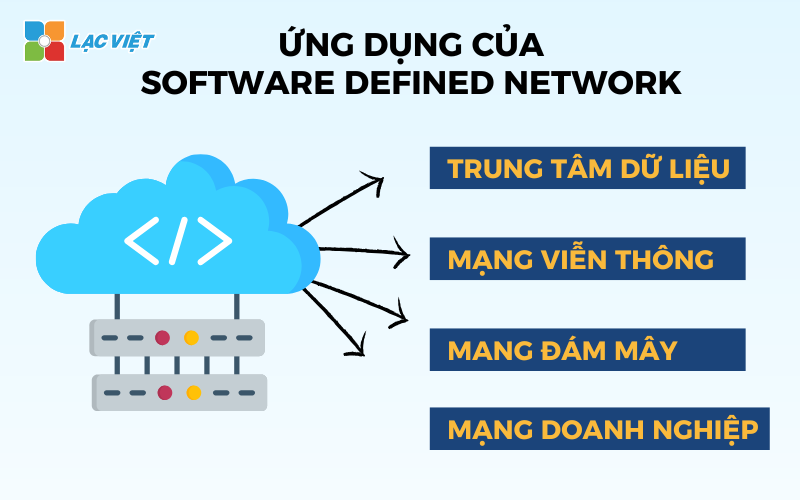
6. The process of building design and construction, deployment of SDN for business in Vietnam
Deploy Software Defined Network not only simply installed software or equipment that need to have a clear process, basically to ensure that the system network stable operation, effective, and fully meet the particular requirements of the business.
Here is a 5 step process to building design, construction and deployment of SDN for business in Vietnam.
Step 1: Determine the requirements of customers
The first step in the process of deploying SDN is listening – a thorough analysis of the requirements from clients. This includes factors such as your business goals, problems are encountered with the existing network, the special requirements of customers for new networking system. Along with that, understanding industry and security requirements will help put out the most suitable solution.
Detail the activities in this step:
- Find out your business goals: Businesses need to network with high performance, good security, or scalability flexibility?
- Reviews the current state of the network: The problems to be overcome, including network congestion, weak security, or the complexity of managing network infrastructure.
- Listen to specific requirements: For example, a business in the financial sector may require solutions SDN with features enhanced security to protect customer information and transactions.
Step 2: proposed solution
After you have understood the requirements and goals of the client, the next step is to take out the solution design, network infrastructure fit. This is the stage experts of Vietnam reviews the current system of customer to point out the weaknesses or limitations.
Then the solution will be proposed with the equipment, software and the project implementing Software Defined Network to help optimize the efficiency network, security, cost.

Detail the activities in this step:
- Reviews current system: Experts Lac will check carefully analyzing the network infrastructure's current customers to identify the problem, for example, network congestion, not scalable, or lack of privacy.
- Solution options and appropriate technology: Experts will suggest the solution SDN, such as using controller SDN such as Cisco ACI, VMware NSX, or OpenDaylight to coordinate and manage the network effectively.
Step 3: quotation and negotiate
Quotes will include all the components required for the deployment, from hardware, software to cost and support services.
The process of negotiation will help to ensure that solutions are implemented in accordance with the budget of the customer, optimize operating costs, net long-term. If the customer is asked to reduce the cost or to change some elements in the proposal, Vietnam will adjust solution for ensuring the effective, feasible.
Step 4: Develop solutions
After the quote is approved and the agreement is signed, the Lac will deploy solution SDN for customers. This is an important stage in the construction process, including design, installation, network infrastructure, install the controller Software Defined Network and integrating network devices into the system.
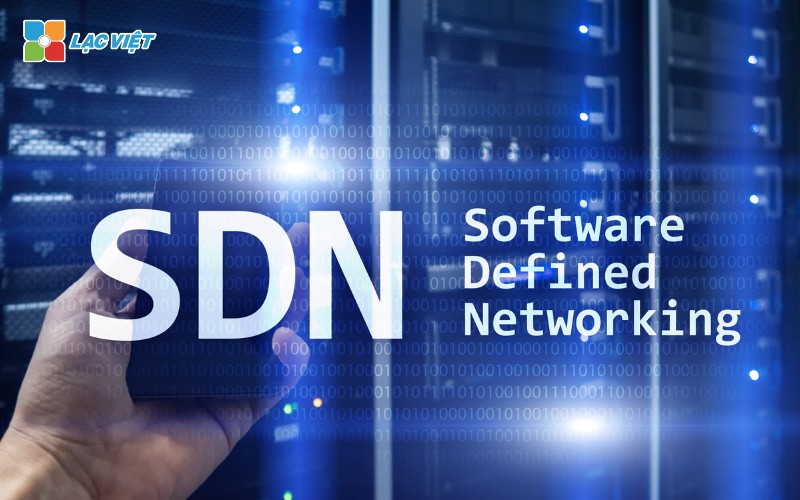
Detail the activities in this step:
- Installation of network infrastructure: Vietnam will proceed to install the network equipment, such as switches, routers and the controller SDN to ensure the network can operate smoothly.
- Check and calibrate: After the deployment is complete, our technical team will check the system to ensure the equipment is functioning properly, the network performance satisfactory.
Step 5: technical Support
When the system SDN is deployed successfully, Lac Viet continue to support businesses in managing any network operator.
Service technical support will include periodic maintenance, system upgrades and monitoring network system for early detection of problems or weaknesses. Vietnam will also provide security solutions continuous support troubleshoot when necessary.
With three tier architecture and the ability to manage focus, Software Defined Network bring many advantages such as enhanced security, reduced costs, enhanced flexibility. For businesses that are looking for solutions advanced network, Lac Viet ready to bring a systems, network, modern, stable, cost optimization. Please contact us today for advice and develop solutions SDN most suitable for your business!
CONTACT INFORMATION:
- Lac Viet Computing Corporation
- Hotline: 0901 555 063 | (+84.28) 3842 3333
- Email: info@lacviet.vn – Website: https://lacviet.vn
- Headquarters: 23 Nguyen Thi Huynh, P. 8, Q. Phu Nhuan, Ho Chi Minh city


